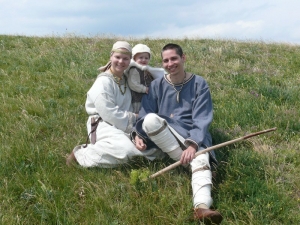
Bronze axe
The earliest evidence of human presence in the area of Terchová. It was found on a hillside of Úboč – right above the church in 2010. The axe can be traced back to the Middle Bronze Age so called Lusatian culture. Its dimensions are: length 14.2 cm, blade width 3.2 cm, width of the widest part of the body 3.4 cm, thickness 2.8 cm.
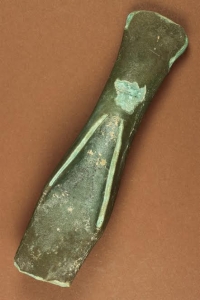
Iron spear
It dates back to the period of the Puchov culture, 2nd-1st century BC, the Early Iron Age. The spear was found near the former Cottage under Rozsutec in 1966.
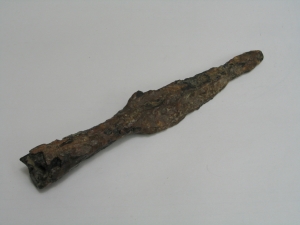
Slavic settlement
The Slavic settlement near the Žilina Basin is documented by numerous archaeological findings, from the 5th-6th century AD.
Pottery shard
This finding comes from the Early Middle Ages (10 – 11c AD). The pottery shard was found in the National Nature Reserve of Rozsutec, in the area called Obšívanka on the, so called, Jánošík’s path in 1973. The shard is from the bottom part of the vessel made of fine sandy material of dark brown color.
Iron well with pitch mill
The presence of the Slavic population in the Žilina Basin is documented by the finding of a medieval pitch mill also called the Iron Well in the village of Varin and comes from the 12th-13th century. Back then, the pitch was used to treat products from organic materials such as ropes, belts, wooden drums etc. This unique overground mechanism has been unmatched in Slovakia so far.
Walachian settlement
The villages of the microregion formed progressively mostly by means of Wallachian colonization which spread in the area in the second half of the 15th and 16th century. The Vlachs, who settled in the Těšínsko-Kysucké Mountains were mostly Ukrainians and Ruthenians, Poles as well as inhabitants of eastern Slovakia. It is very likely that Juraj Jánošík’s parents were the descendants of Vlachs. The settlement gave rise to many villages, some of the youngest in the region, namely, Zázrivá (1556), Terchová (1580) and Lutiše (1662).
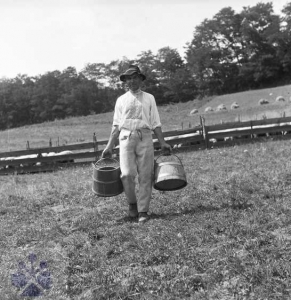
Founding of the village Terchová
The founding charter of the village dates from April 22, 1580 and the original name of the village was Kralowa. It was founded based on the so called “Walachian Law” which was gradually losing its ethnic character and its economic character started to prevail. The name Terchowa was first mentioned in 1588. The first mayor became Jurko Murdan.
1688 - Juraj Jánošík
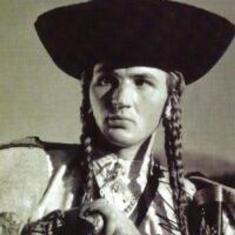
The members of the group were recruited mostly from the nortwestern regions of Slovakia, Moravia and Poland and were active mostly in the region of Trenčín, Liptov, Orava and Gemer-Malohont, but also in Poland, Silesia and Moravia. They would loot noblemen and wealthy burghers, and when the winter came they would disperse into near villages and change their place of residence very frequently. Jánošík often stayed in Terchová, in various villages and hamlet in the region of Kysuce, but also in Klenovec at Tomáš Uhorčík’s. Highwaymanship was a form of class anti-feudal resistance of oppressed people often plagued by wars and epidemics which had a profound impact on people’s sentiment. In folk legends, highwayman leaders were an embodiment of fighters for social justice and rights. Jánošík himself has represented a symbol of resistance of working commons against exploitation and national oppression, the hero of many folk tales, legends, songs and dances. At the turn of February and March in 1713, 30 pandurs (military guards) caught Jánošík in Uhorčík’s house which was his shelter during the harsh winter. He was executed on March 17 of that year at a place called Šibeničky. Supposedly he was buried at a small cemetery outside the town.
1718 - Adam František Kollár
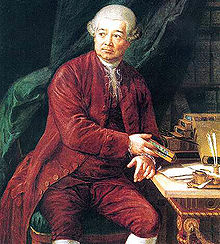
This outstanding scholar also called “Slovak Socrates” was born in Terchová in 1718. Adam František Kollár (†1783) was a historian, archivist, educator, librarian, polyglot, translator, reformer, chief of the Imperial-Royal library and the advisor of the Empress Maria Theresa who also was a godmother to his only child.
1858 - Earthquake
1871 - Košice-Bohumín Railway and Považská Railway
2nd half of the 19th century - Plague
1908 - Koloman Kolomi Geraldini
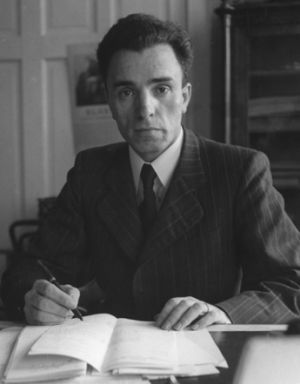
A native of Terchová Koloman Kolomi Geraldini was a prominent inter-war poet, translator, editor, columnist and a dignitary of the Matica slovenská. JUDr. Koloman Kolomi Geraldini (†1994).
1935 - Terchová - Slovak Hollywood

In the early 20th century, Terchová became one of the most sought-for place for making films in Slovakia. Karol Plicka was the first set to realize his dream to shoot a feature film about Juraj Jánošík here. Due to lack of funds he never finished the film, but in 1935, a group of Czech filmmakers lead by a director Martin Fričo revived the idea, and with its iconic cast the film attained tremendous success. The development of the Slovak cinematography meant that a documentary or news programs were made almost on annual basis here.
1945 - destruction of the village Terchová
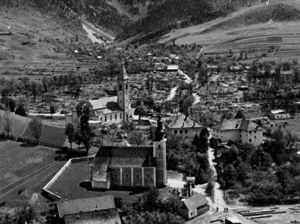
Towards the very end of World War II, during the liberation fights on April 7 and 8, 1945 when the German fascists were already retreating, the half of the village was burned down. As a consequence, dozens of families had to move out of Terchová to other parts of Slovakia.
1963 - Juraj Jánošík’s Days
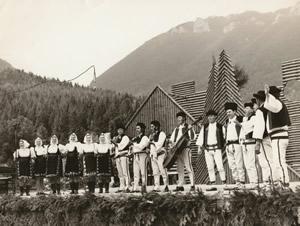
The year 1963 marks the first official Juraj Jánošík’s Days which took place on the occasion of the 250th anniversary of Jánošík’s death. However, the idea of organizing an annual folklore event in Terchova dates back to 1959. An impulse that could lead to such tradition might have instigated by the Regional Festival of Songs and Dances which was held as a part of the celebration of the 15th anniversary of the Slovak National Uprising.
1967 - National Nature Reserve Malá Fatra
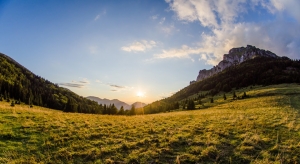
Because of its exquisite natural beauty and remarkable diversity of plant and animal species, Malá Fatra was declared a National Nature Reserve on January 3, 1967 and later in 1988 reclassified as a Natural Park.
